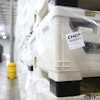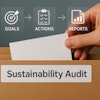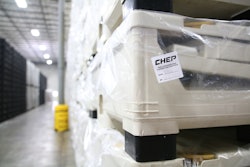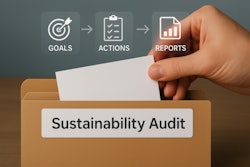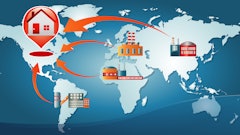
In 2024, companies made meaningful strides to tackle internal carbon footprints. From upgrading operations with energy efficiency measures to securing renewable power, progress on Scope 1 and Scope 2 emissions, tied to both direct operations and purchased energy, was tangible. Yet one critical blind spot persists: Scope 3 emissions.
Scope 3 encompasses all indirect emissions tied to supply chains, product use and end-of-life treatment. For a majority of companies, these emissions represent more than 70% of their climate impact. And despite this overwhelming share, they remain the least addressed. This gap is representative of growing regulatory exposure, reputational risk, and a potential financial liability as investors, customers, and policymakers demand more transparency.
The urgency to act is intensifying, and regulators are working to ensure that Scope 3 data is disclosed. Consumers are asking tougher questions about the climate impact of the products they buy, and investors are sharpening their focus on long-term climate resilience and accountability. For companies that aspire to lead, addressing Scope 3 is critical to staying competitive in a rapidly decarbonizing economy. Engaging with partners whose expertise in supply chain engagement, product footprinting, and science-based target setting can help bridge the Scope 3 data gap and turn ideas into tangible progress.
Partnering across the supply chain
One of the most effective levers for closing the Scope 3 gap is collaboration with suppliers. For years, the standard practice was to send out questionnaires and request emissions data, often resulting in inconsistent or incomplete responses.
Forward-looking companies are moving well beyond this transactional approach. They’re actively investing in supplier engagement, offering technical support, co-developing decarbonization roadmaps, and even sharing the costs of transitioning to lower-carbon processes and materials. These partnerships not only cut emissions but also strengthen relationships, reduce supply chain volatility, and often uncover operational efficiencies that save money.
For instance, a consumer goods company may set a goal to cut supply chain emissions by 30% over the next few years. Instead of simply mandating changes, it could launch supplier workshops, create a resource-sharing hub, and offer incentives for suppliers to switch to renewable energy. In this scenario, the company could achieve reductions well ahead of schedule and deepen supplier loyalty in the process.
Working together helps organizations view suppliers not as risks, but as valuable partners in cutting emissions.
Rethinking products and priorities
Scope 3 emissions don’t stop with suppliers – they extend to the very products companies design and sell, and how those products are used by customers. Progressive companies are embedding sustainability into product development from the outset. They’re choosing lower-carbon materials, designing for reuse and recyclability, and finding ways to extend product lifecycles. This is where climate accountability intersects with innovation.
Of course, companies can’t do everything at once. That’s why climate risk data is becoming an essential decision-making tool. By analyzing where emissions are most concentrated, whether in upstream suppliers, product use phases, or end-of-life treatment, companies can prioritize the interventions with the biggest and fastest impact. Scenario modeling also helps organizations anticipate how climate-related risks, such as regulatory shifts or raw material shortages, might affect future supply chains and product strategies. Firms can help this process by combining data modeling with strategic guidance, assisting companies test different pathways and embed sustainability criteria directly into product and portfolio design.
In short, addressing Scope 3 isn’t just about cutting emissions; it’s about reshaping portfolios and business models in a changing economy.
Tools for action and accountability
Companies often set bold sustainability targets, but lack systems to measure progress and the complexity of Scope 3 can feel overwhelming. Unlike Scope 1 and 2, which are easier to measure and control, Scope 3 requires data from hundreds, sometimes thousands, of external partners and products. That’s where digital tools, such as the following, are proving indispensable:
- Supplier engagement platforms: Makes it easier to gather emissions data and track performance, for example by using centralized portals where suppliers can report metrics and access best-practice resources in real-time.
- Product footprinting software: Helps organizations compare the environmental impact of different design choices, such as modeling how alternative materials/manufacturing methods affect total emissions.
- Advanced analytics tools: Enables planning that integrates climate/environmental risks, for instance, by stress-testing supply chains against carbon pricing or extreme weather events.
Beyond measurement, these tools create transparency. They allow companies to validate claims, report with confidence and demonstrate accountability to stakeholders who increasingly demand proof, not promises. With regulators and investors on high alert for overclaiming, this level of rigor is now a business imperative.
The path forward
Closing the Scope 3 gap is not a quick fix. It requires a fundamental shift in how companies engage with suppliers, design products and manage data. Companies that wait to act will face steeper costs of compliance, strained supplier relationships and diminished trust among customers and investors. To make meaningful progress, organizations should begin implementing the following steps:
- Strengthen supplier engagement through collaboration and building long-term partnerships.
- Incorporate agility/flexibility into operations so supply chains can adapt to disruptions while maintaining progress on climate goals.
- Foster innovation in product design and materials through emerging tools and technologies to further enhance supply chain resilience.
Those willing to collaborate with partners, innovate and invest in tools, will not only mitigate risk but also unlock new value: stronger supply chains; enhanced brand reputation; and new opportunities for innovation and growth.


